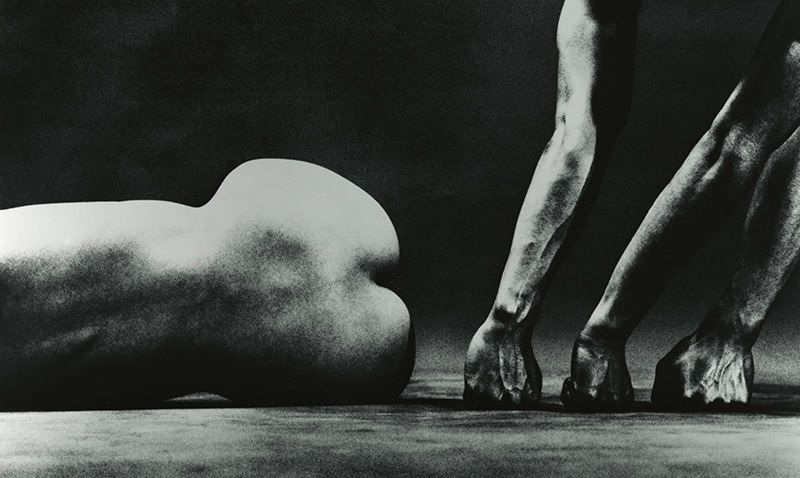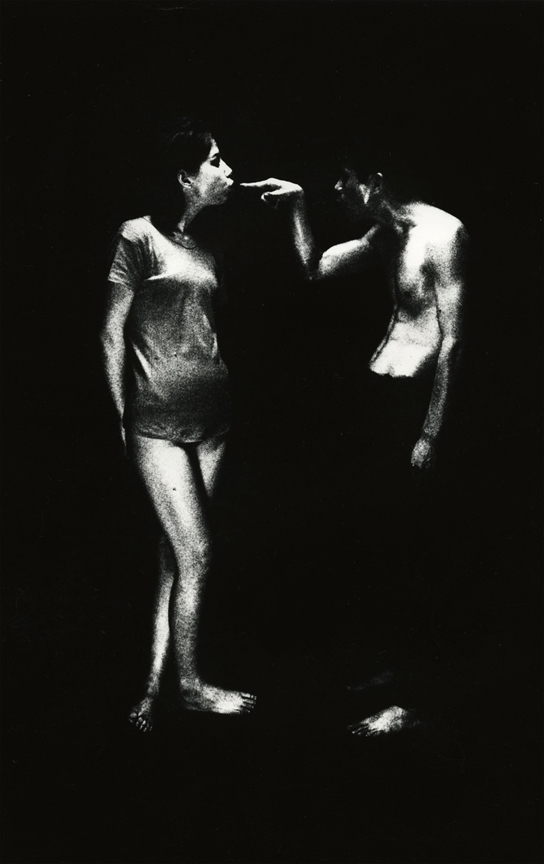Shows
Eikoh Hosoe’s "Curated Body: 1959–1970"


The massive loft space of the Aperture Foundation in Chelsea, which serves as a hub for the organization’s numerous activities geared towards the advancement of photography, also houses a number of smaller galleries. Miyako Yoshinaga, on building’s 2nd floor, specializes in Japanese photography, and this month the gallery put up 34 vintage prints by Japanese photographer, Eikoh Hosoe, offering a striking and concentrated selection of the images that confirmed Hosoe’s place as one of the country’s most talented photographers.
Hosoe, who recently celebrated his 80th birthday, has been a prominent fixture in Japanese photography for half a century. In 1974, he was selected by MoMA as one of 15 artists in the first major survey of Japanese photography outside of Japan. Images from Hosoe’s “Man and Woman” series (1959-1960), that were included in the landmark exhibition, "New Japanese Photography," are now on view once again, joined this time by prints from “Embrace” (1969-1970).

These two series mark a decade of provocative artistic innovation. Images and films produced during these years brought Hosoe international recognition, wielding power in their explicit exploration of the human form. The body, unmediated, becomes arresting and unfamiliar terrain. The exhibition’s title, “Curated Body” hints at Hosoe’s long-time fascination with dancers. In the 1960s Hosoe met Tatsumi Hijikata, the founder of the Ankoku Butoh dance movement and one of the main figures in “Man and Woman,” who would become his faithful collaborator.
Hosoe’s concerns resonated deeply with Hijikata whose “Dance of Darkness” performance explores themes of death and eroticism through exaggerated, and extremely slow movement, by performers covered in white body paint.In “Man and Woman” and “Embrace,” the extremities of light and dark are juxtaposed in every image. Whereas light is used to highlight the contours of the dancers’ bodies and faces in the earlier series, the tension created by the models’ interactions evolves into tension embodied in flesh itself in “Embrace.” In this series of portraits, limbs are treated as the subjects of a still life, but there is a surprising amount of movement as well—muscles are taught, and bodies are folded and pressed against one another. Hosoe pays particular attention to the outlines of the bodies, heightening the contrast between them through precise manual manipulations of light and shadow. In these images, the female form is white and smooth, contrasted with the texture and definition of the male body. Such effects are achieved through exacting experimentation in levels of exposure.

The observations made by the curators of the 1974 MoMA show captured the concerns of Hosoe and his contemporaries to use photography to confront the viewer directly: “these pictures impress us not as a comment on experience, or as a reconstruction of it into something more stable and lasting, but as an apparent surrogate for experience itself, put down with a surely intentional lack of reflection." In the environs of Miyako Yoshinaga, the curated body is at once alien and intimate, as destabilizing as it is lasting, and an impressive call to experience the human form on its most essential terms.
Eikoh Hosoe: Curated Body 1959–1970 is on view at Miyako Yoshinaga through October 19, 2013.
Claire Sabel is an arts writer based in New York.







